Biodiversity
What is Biodiversity?
Biodiversity refers to the variety of life on earth. This includes diversity of habitats, species, the genetic diversity in within each species and interactions between these species and their environment.
Why is it Important?
Biodiversity provides us with ecosystem services, such as pollinators pollinating our food crops, worms recycling nutrients and trees producing oxygen for us to breathe.Biodiversity is under extreme pressure due to climate change over fishing, clearing of forests for agricultural land, agriculture mono-cultures, mining and pollution.
Species and habitats are being lost at an alarming rate.
Web of Life
Detailed below are some key habitats and species which are commonly found around Kenmare. The habitats and species are inter-woven and add to the diversity of life.
Habitats
The wider Kenmare area contains a wide variety of habitats, including, Kenmare Bay, shoreline, lakes, rivers, river banks, woodlands, scrub, farmland, mountains, hedgerows, heath, peatlands, our gardens, roadsides and drystone walls. Each one of these larger habitats contain many sub-habitats. A greater diversity of habitats will bring a greater diversity of species.
The images below give us a flavour of the nature to be cherished on our doorstep.
-
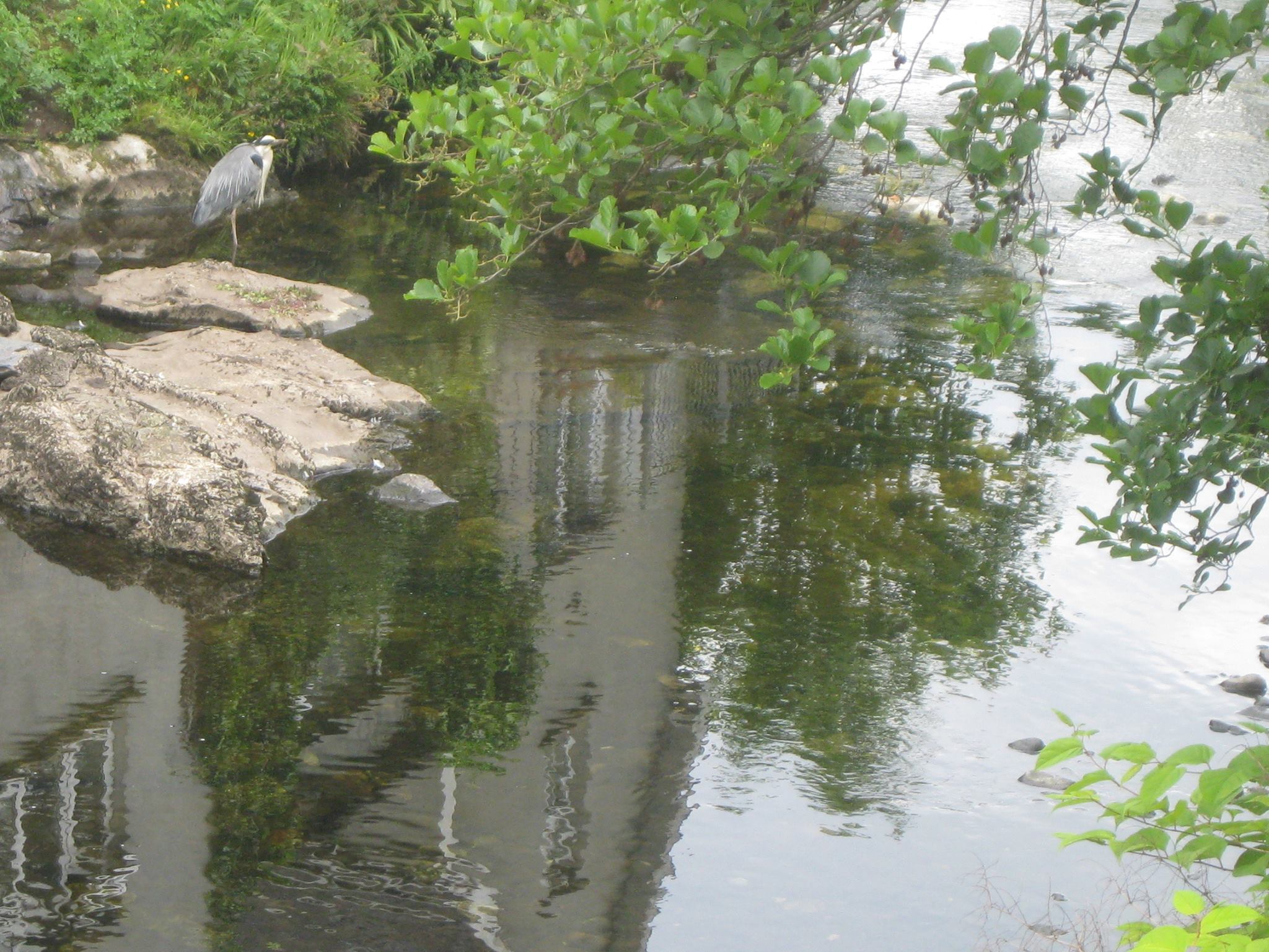
Norrie the Heron on Finnihy River Rivers and river banks are corridors of life for plants, fish, insects, birds and animals -
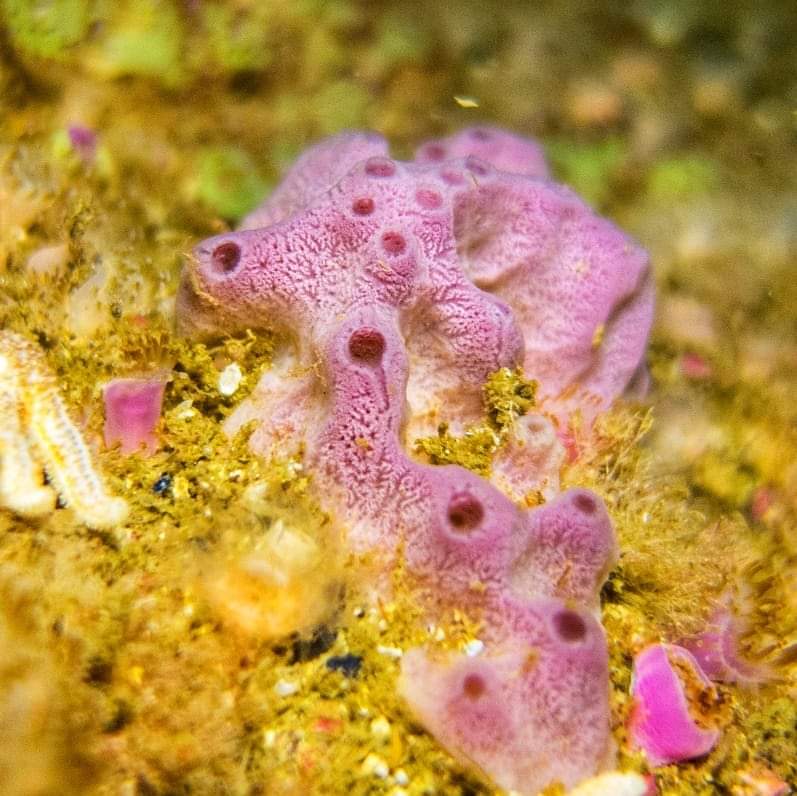
Underwater beauty Kenmare Bay, SAC is host to many habitats and species -
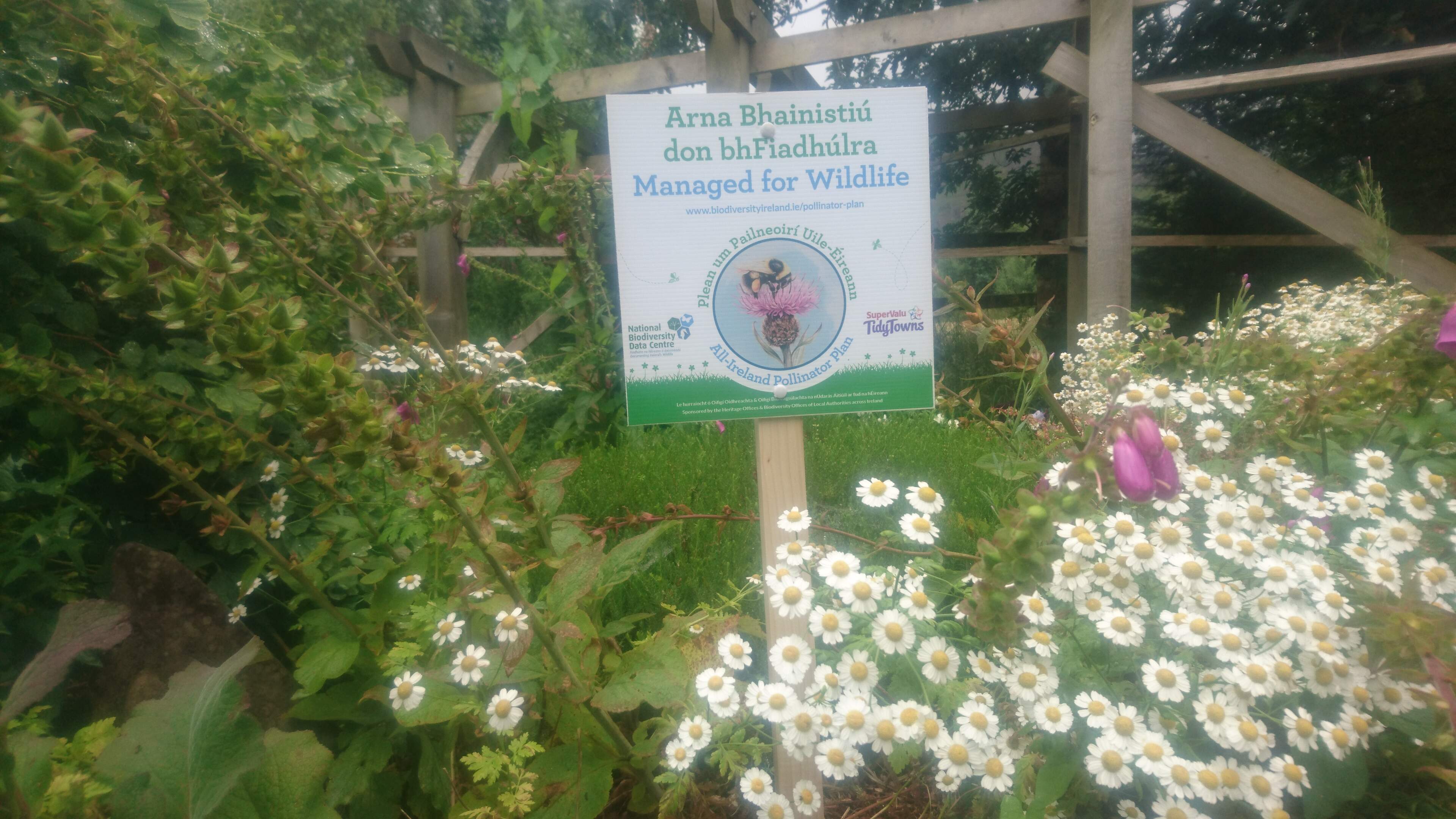
Gardens Our gardens can be made into habitats and attractive to wildlife -
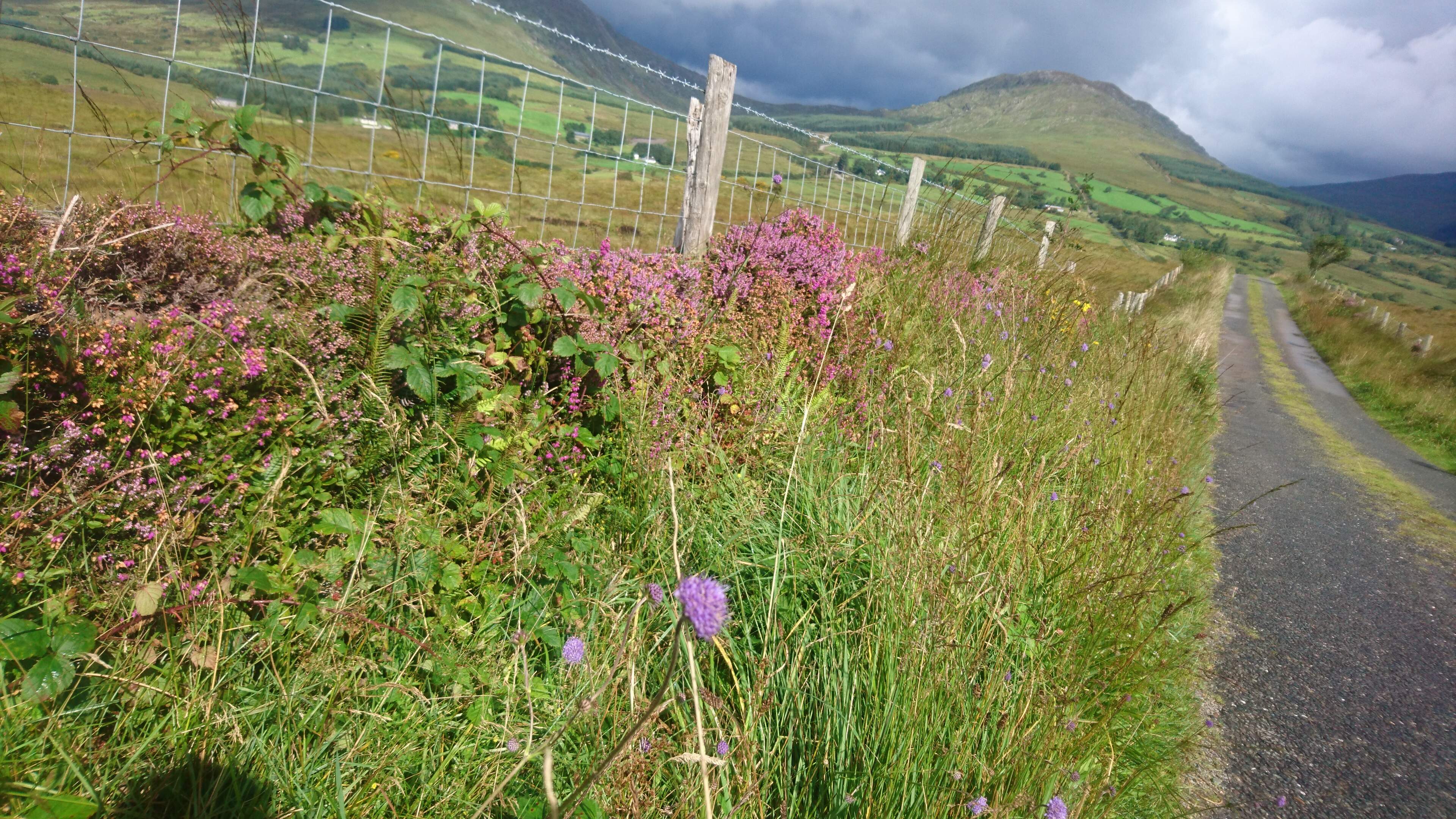
Roadside Often species rich, heather, scabious, wild angelica and bramble are common species -
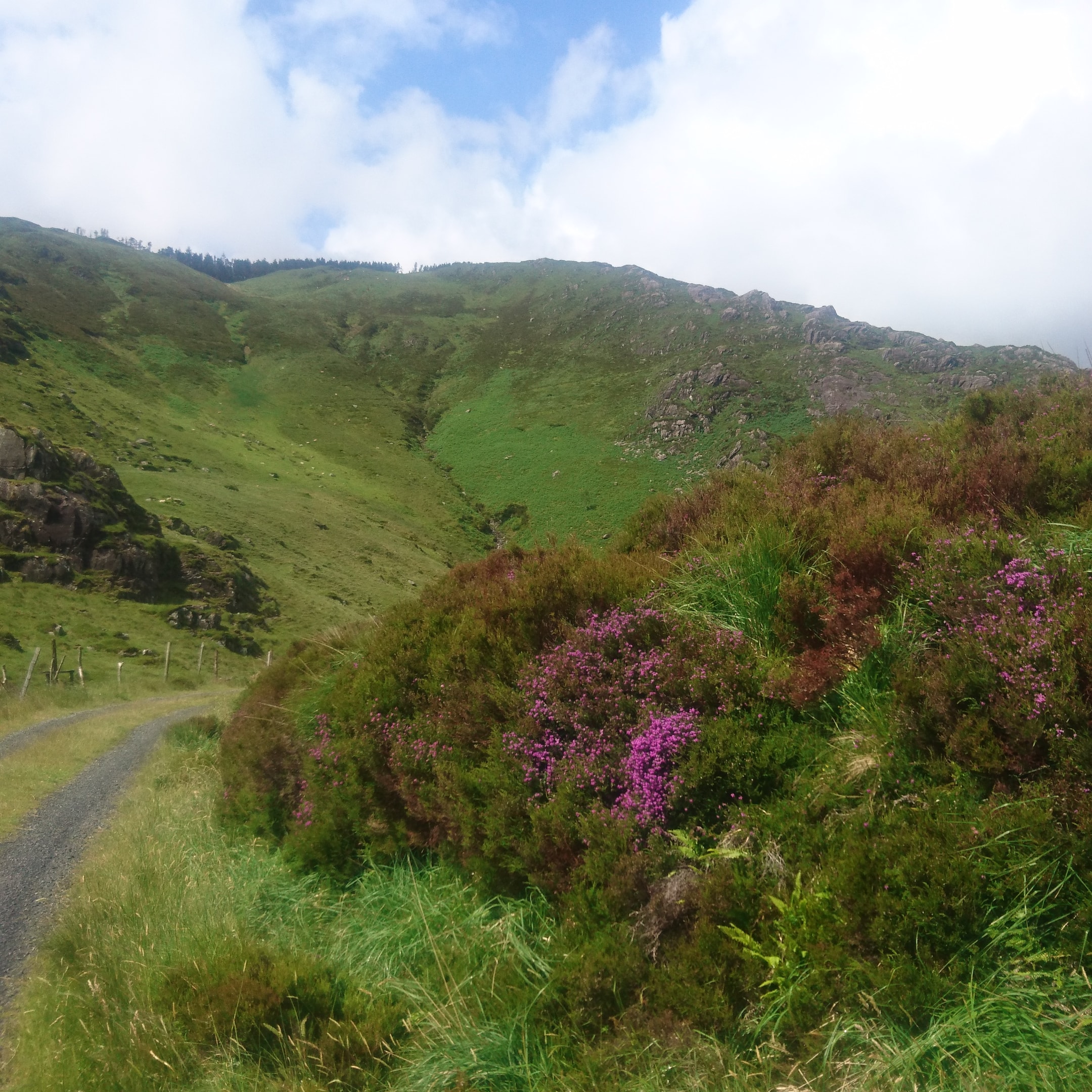
Mountains Our uplands have huge nature potential for critical species, such as Grouse -

Dry stone wall A habitat for plants and insects, aesthetically pleasing and heritage value. -

Bog Cotton on the Mountains By Norm McCloskey -
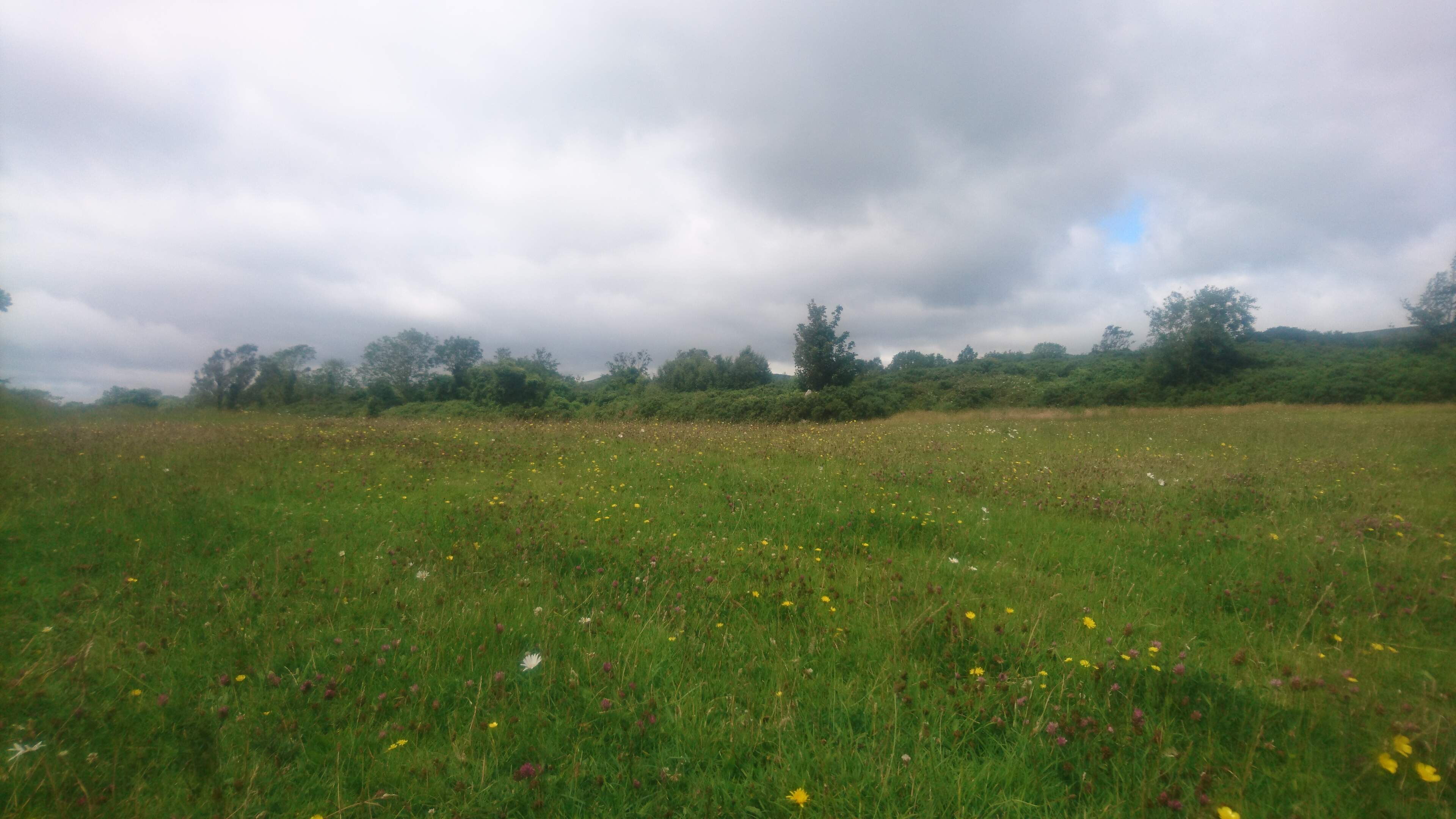
Wildflower meadow Natural wildflower meadow at The Peninsula -
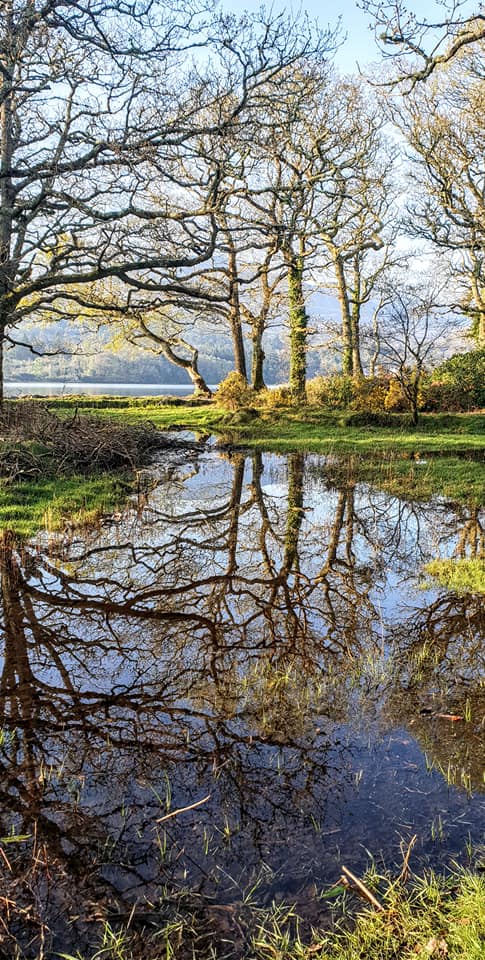
Reenagross by John Dillon Woodland in winter, this habitat supports a range of insects, animals, birds. -
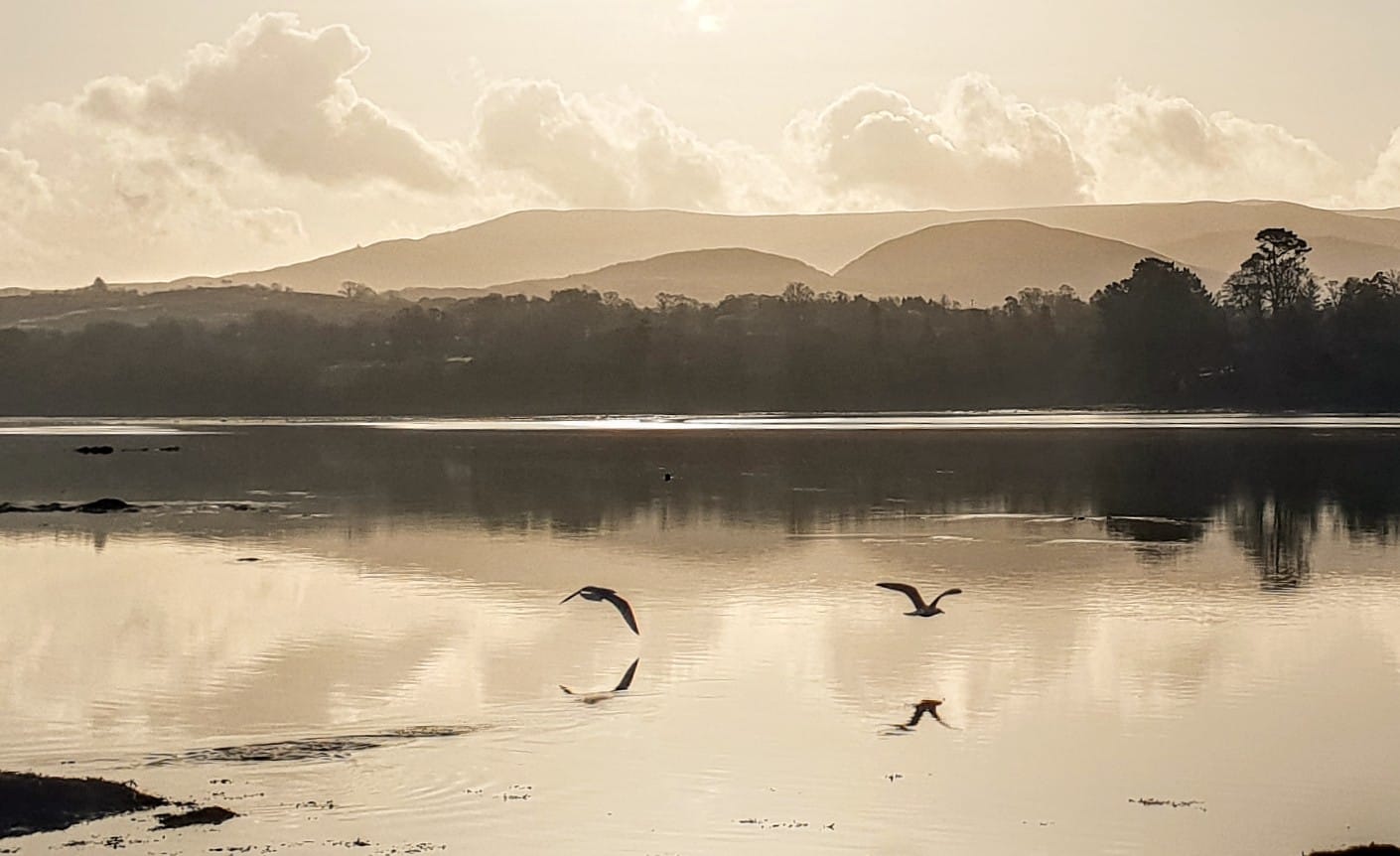
Kenmare Bay by John Dillon A Special Area of Conservation (SAC) needs to be cherished and preserved for all marine life. -

Reenagross by John Dillon A variety of habitats attracts many species. -
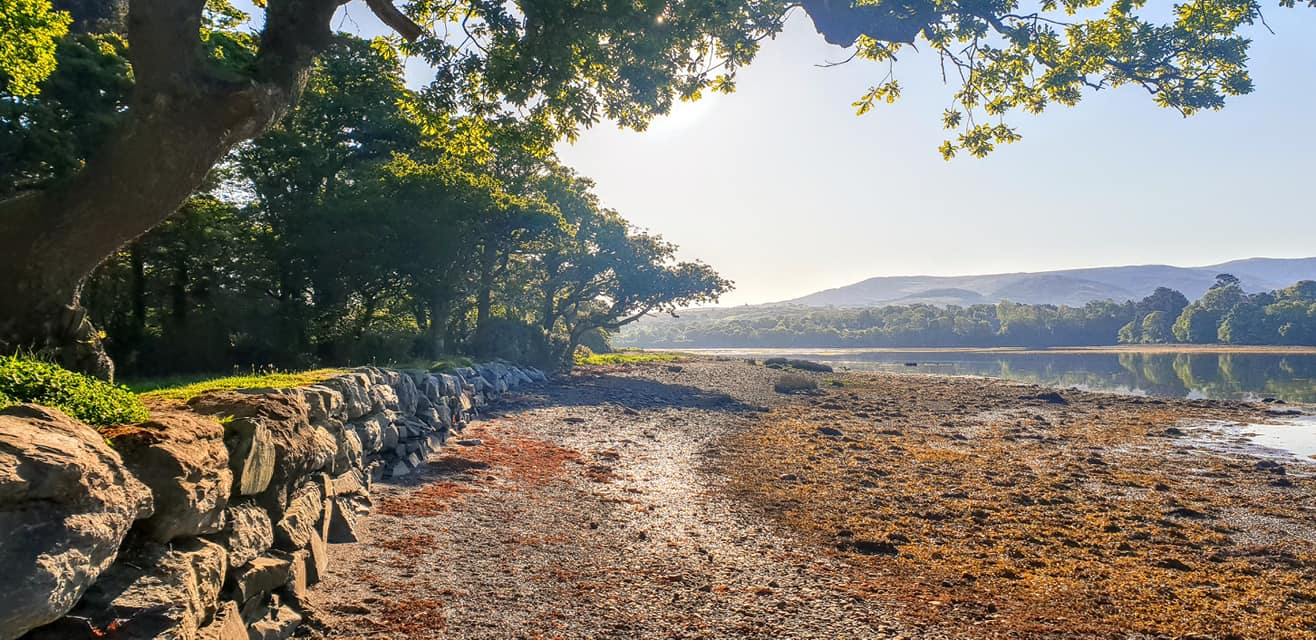
Reenagross Shore by John Dillon
Scots Pine - (Péine Albanach)
Scot’s Pine (Pinus Sylvestris) was originally a native species, and re-introduced in the 17th Century from Scotland.
It is an evergreen tree, growing up to 35 metres, with wild-pollinated flowers. The cones ripen after two years, releasing seeds which are blown by the wind.
Scots pine is a wildlife friendly conifer providing habitats for nesting birds. The cones are among the native Red Squirrels’ favourite food.
Knapweed - (Mínscoth)
- Habitats found at the Peninsula include, wildflower meadow, scrub, woodland, seashore, fresh and salt-water habitats.
- Knapweed (Centaurea nigra) is found in the wildflower meadow & flowers from June to October.
- Knapweed is shaped like an old fashioned shaving brush, with 20-40mm reddish purple flowerheads and blackish bracts underneath.
- The flowers are a source of quality nectar and an important food source for bumble bees, butterflies and beetles.
- The seeds are a food source for birds.
Yarrow - (Athair thalún)
- The Fairgreen is a well-maintained urban park. If we look, we can find habitats in the grass, trees and flowerbeds.
- Yarrow (Achillea millefolium) is found in the grass area of the Fairgreen. It flowers from June to November.
- Numerous little flowers (6mm each) are on each umbel-like flower head.
- Feathery foliage (‘millefolium’ means ‘a thousand leaves’) that is grey-green with creeping shoots. White, sometimes pinkish daisy-like flower heads, loved by pollinators.
- It has been used traditionally in herbal medicine.
Ivy - (Eidhneán)
- Habitats found at the Hillock are grassland, scrub, riverbank and Limestone outcrop.
- Ivy (Hedera hibernica) is found in the scrub area of the Hillock. It flowers from September to November and has purple-black berries in Spring.
- It is a climbing or ground cover evergreen plant.
- The flowers provide food for pollinators in winter, including the Holly Blue butterfly. The Brimstone butterfly overwinters in the leaves.
- The berries provide food for birds in Spring.
- The foliage provides cover for birds to build their nests.
Wild Angelica - (Gallfheabhrán)
- Habitats found at Cromwell’s Bridge include rock face, grassland and river bank.
- Wild Angelica (Angelica sylvestris) likes damp places and is found on the riverbank. Flowers from July to September.
- White flowerheads are up to 150mm in diameter. It grows up to 2000mm.
- It is attractive to a range of insects and is the preferred foodplant of Lacewing moths.
Sea Aster - (Tripolium pannonicum)
- Habitats found at Reenagross include woodland, estuary, shoreline and grassland.
- The Sea Aster is found on the shoreline. Flowers from July to October.
- The Sea-aster has a daisy-like flower with lilac petals (10-20mm) across and fleshy green leaves. It spends a good part of it’s life standing with its feet in seawater.
- It is a valuable source of nectar for late butterflies, such as red admiral.
Bladderwrack - (Feamainn Bhoilgíneach)
- Kenmare Bay contains many different habitats, the depth of water will determine the habitat and species found, from rocky shores to kelp forests in deeper water.
- Bladder rack (Fucus vesiculosus) or brown seaweed is found in the intertidal zone on the rocky shore. It can be variable in colour from olive green to dark brown and can vary in size from 150mm to 1000mm according to growing conditions.
- It is anchored to the rock by a hold-fast. The bubbles or bladders allow the plant to float in the water, catching more sunlight for photosynthesis and absorbing nutrients.
- Seaweed is important for shelter for animals and small fish, such as crabs and gobies. It is grazed on by snails, such as the flat periwinkle.
- Seaweed reduces the energy of the waves approaching the shore protecting the coast from erosion.
Actions to help improve Biodiversity
Habitat Management
- The first objective is to protect existing habitats, such as hedgerows, trees, dry stone walls, wetlands andearthbanks. By doing so we are protecting the habitat and the wildlife that lives there.
Habitat Creation
- Convert a sterile lawn into a food source and nesting site for pollinators by mowing less frequently
- Create natural habitats where possible, including ponds, woodlands, hedges, wildflower meadows and log piles.
- Provide bug hotels, bat boxes, bird boxes and areas for solitary bees to nest in.
- Planting Pollinator friendly and native plants.
- Native species will support a wide variety of plants which have co-evolved over time together
Additional Actions
- Connect with nature for well-being
- Eliminate herbicide/pesticide use to protect pollinators from chemical poisoning.
- Grow your own food, reducing food miles and packaging. Plant a fruit tree or bush, requiring little maintenance.
- Grow herbs and salads where space is limited.
- Reduce our impact on the planet by reducing waste and consumption.
- Engage in citizen science from your own back yard. Records can be logged with The National Biodiversity Data Centre online or on their app.
- Put up a sign to alert passersby that your garden is now pollinator friendly. Templates can be downloaded at pollinators.ie
- Talk about it with friends and family. Tell your local politician that action to improve Biodiversity and to reduce society's impact on our planet is important to you.




















